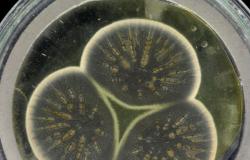An international team of astrophysicists has discovered that the mysterious “red dots” observed by the James Webb Space Telescope are galaxies of the early Universeexcellent factories for producing dust, the material that will eventually fuse and give rise to planets.
The discovery, led by the Astrobiology Center (CAB), CSIC-INTA, and published this Tuesday in the journal The Astrophysical Journalhas been possible thanks to MIRI, the only space telescope instrument that works in the mid-infrared, which allows it to observe cold objects, very distant objects – such as the first galaxies -, and objects that are behind dust.
In the first three years of scientific operations, Webb – an international collaboration between ESA, NASA and the Canadian Space Agency that was launched on Christmas 2021 – discovered the so-called Little Red Dots (LRD) or small red dots or “red dots”as they were called in Spanish.
Now, thanks to new data taken by MIRI, scientists have discovered that those red dots are the most efficient dust factories in the early Universe, a dust very different from the one we see in nearby galaxies and which is at much higher temperature, which indicates a very energetic heating source such as very young and massive stars or supermassive black holes.
«The little red dots are very numerous in the very young Universe, when it was only 5% of its current age, and they are very red but also quite blue at the same time, depending on the spectral range at which you look. “This sounds paradoxical, and in fact it is not common, we did not know about objects like these before James Webb discovered them,” he explains. Pablo G. Pérez-GonzálezCAB researcher and first author of the article.
Large amounts of dust
In this study, MIRI has shown that the red dots contain large amounts of dust in the form of small carbon-containing grains. This dust It is quite hot, it is not like the dust that we see in nearby galaxies, which has temperatures around -250 ºC.
“The dust particles in the red dots have temperatures at least as high as those in our furnaces, and can reach the temperatures of lava from a volcano, just a little lower than what is needed to destroy those dust grains,” Pérez-González details.
“These great temperatures can be reached if the dust is heated by the enormous amount of energy that supermassive black holes inject into their surroundings, as they accumulate material and become what is known as an active galactic nucleus (AGN).” clarify Jianwei Lyuresearch assistant professor at the University of Arizona and co-author of the study.
The team believes that the origin of the dust and the heating source is due to the presence of a large number of stars very, very young and blue, which also explains the blue reflections of the red dots.
“These stars are hundreds of times more massive than our Sun and live very short periods, just a few million years instead of the 4.5 billion years our Sun has existed and the 4.5 billion years it will still live. These newly formed stars can produce enormous amounts of dust,” according to Pérez-González.
Given this data, the team believes that we are probably seeing the first major star formation event of some of the youngest known galaxies.
“We now know that dust was produced in large quantities in the early Universe, and will eventually coalesce to form planets, and probably life on them,” concludes Pérez-González.






